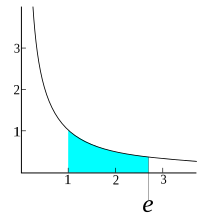
Photo from wikipedia
Objective: To investigate the effect of different cusp inclination on short implant prosthesis of maxillary first molar after 3 years of weight-bearing in biology and mechanics. Methods: The clinical patients… Click to show full abstract
Objective: To investigate the effect of different cusp inclination on short implant prosthesis of maxillary first molar after 3 years of weight-bearing in biology and mechanics. Methods: The clinical patients were randomly selected from the database and divided into four groups A, B, C, and D according to the cusp inclination of the maxillary first molar short implant restoration (4.8 mm × 8 mm, Dentium). 20 cases in each group. The cusp inclination was 10 degrees–15 degrees, 15 degrees–20 degrees, 20 degrees–25 degrees, 25 degrees–30 degrees. After 3 years of weight-bearing, cone beam computed tomography (CBCT) and Florida probe were used to measure and observe the height of alveolar bone (H), periodontal probing depth (PD) and modified sulcus bleeding index (MBI). Visual analogue scale (VAS) was used to evaluate the overall satisfaction of patients, and the mechanical complications of each group within 3 years of implant weight-bearing were counted. Results: The H and PD of group D were 1.09 ± 0.23 and 2.19 ± 0.11 respectively, which were significantly higher than those of group A, B and C (p < 0.05). There was no significant difference in MBI between groups A–D (p > 0.05). The VAS scores of group B and group C were 88.36 ± 5.12 and 88.70 ± 4.52 respectively, which were higher than those of group A and group D (p < 0.05). The incidence of food impaction, porcelain collapse and abutment loosening in group D were 40.0%, 25.0% and 15.0% respectively, which were higher than those in group B and C (p < 0.05). Conclusion: The risk of biological and mechanical complications increases after long-term weight-bearing of maxillary first molar short implant prostheses with high cusp inclination. The cusp inclination of short implant prostheses should be designed as low as 25 degrees.
Journal Title: Frontiers in Physiology
Year Published: 2023
Link to full text (if available)
Share on Social Media: Sign Up to like & get
recommendations!